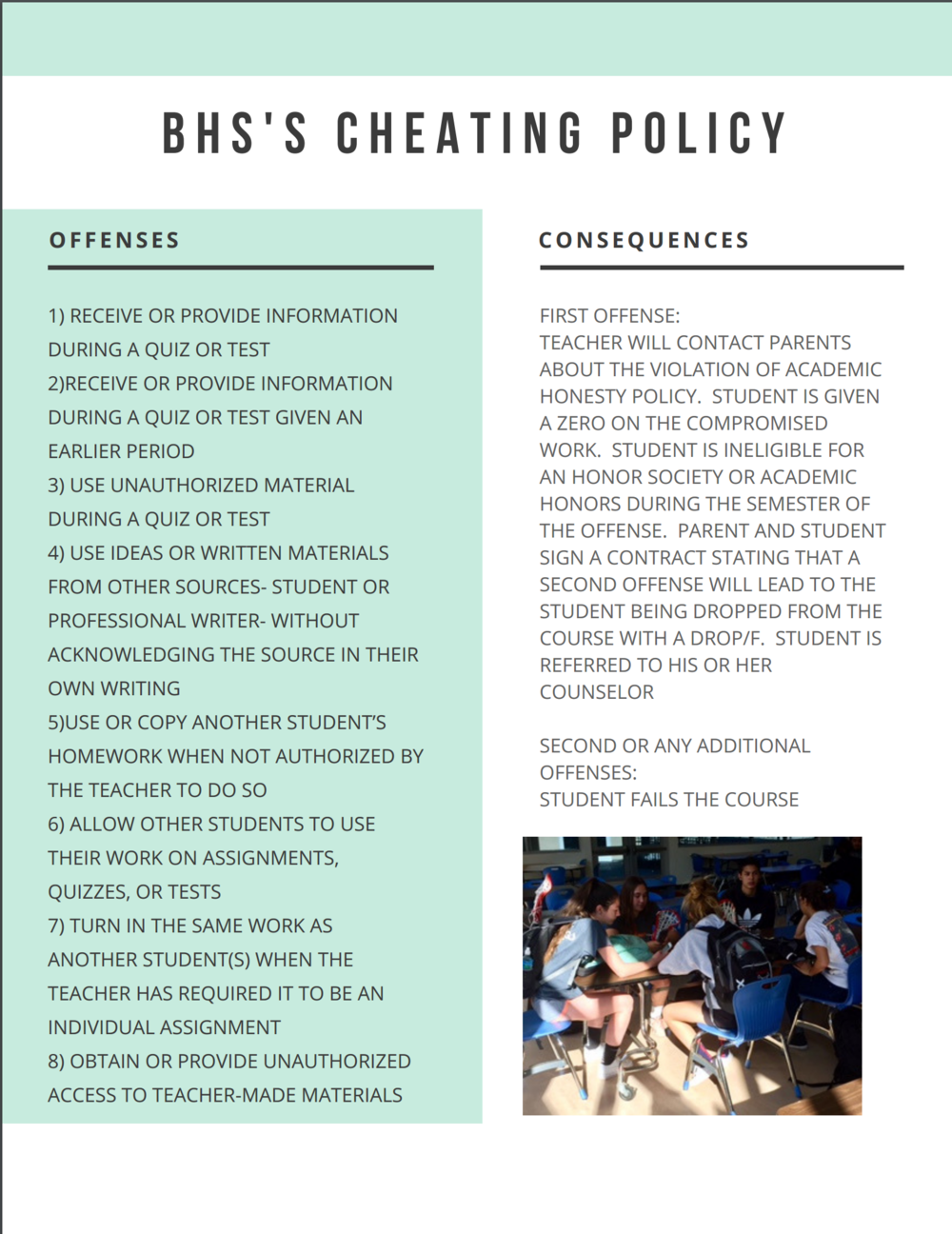Burlingame’s Cheating Epidemic
March 21, 2017
Cheating in high schools is nothing new. It has been going on since schooling began. But at Burlingame, students and teachers alike believe that cheating is more rampant than ever.

“Cheating at BHS is, unfortunately, really easy,” Anonymous Student A said.
Numerous academic studies seem to back up these sentiments. A survey conducted by Rutgers University found that 95 percent of high school students admitted to participating in some form of cheating, whether it be plagiarism or copying homework and tests. A study conducted by the Josephine Institute Center for Youth Ethics found that 1 in 3 high school students admitted to using the Internet to plagiarize an assignment.
Increased academic competition and new technologies, from mobile phones to smart watches, may be reasons for this.
“I think it has probably gotten worse because of phones,” history teacher Dave Sullivan said.
In Sullivan’s AP U.S. History class, he has caught some students with photos of tests and others looking up test answers on their phones.
“The problem is that there is so much online now–entire tests, publishers’ tests–and it’s hard for me to keep up with this,” Sullivan said.
Since the most recent instance of cheating in his class, Sullivan has started requiring students to put all of their materials in the front of the room during testing periods.
Some students said the problem is also growing at BHS because administrators and teachers differ in how they handle cheaters. Some teachers report each instance of cheating to the administration, while others choose to deal with each case on their own.
“The punishments are inconsistent,” said Anonymous Student B, citing how one student received a Saturday detention for copying homework while another was reported to Dean of Students Fred Wolfgramm for the same offense.
“The best way to probably address cheating is to have strict guidelines on test days and also have very specific guidelines regarding the use of the internet and sharing answers and things like that,” junior Sean Rodriguez said.
There is also confusion among students over what constitutes cheating.
“At the time I didn’t even know I was cheating” Student B said, who was caught for sharing homework.
Burlingame’s own cheating policy has leeway built into it. It states that the list of academic honesty violations is “not meant to be all-inclusive, and teachers will apply this policy as outlined in their course syllabi.”
Some students also deliberately ignore certain rules, such as sharing homework, because they don’t agree with policy.
“If what I did is considered cheating, everyone in my class should be getting zeros on their labs,” said Student B.
Furthermore, Student A believes that “actual cheating” should only include offenses along the lines of “copying a test” and that more minor infractions, such as sharing homework, are not dishonest behaviors.
However, Dean of Students Fred Wolfgramm is confident in the cheating policy.
“Our current policy was put in place before I arrived and was created by consultants who specialize in cheating,” Wolfgramm said.
Student B noticed more cheating in AP classes in comparison with CP classes and speculates the cause to be the pressure students feel to succeed in a competitive environment.
“There’s a lot of homework and a lot of really big stakes items so people kind of just take risks,” Student B said.
While everyone agrees cheating is a real problem, most students and some teachers are reluctant to do anything about it. It is rare to have cheating reported, even when people witness academic dishonesty.
“I have never reported anyone cheating,” Rodriguez said. “I would prefer to not rat out people at my school.”
In addition, some students say the pervasiveness of cheating leaves them little choice.
“Sometimes you have to be part of the cheating or it is you that is at the disadvantage,” one student concluded.
This mindset that students must cheat to stay competitive may both encourage more students to start cheating and allows those who are already doing it to continue.








































